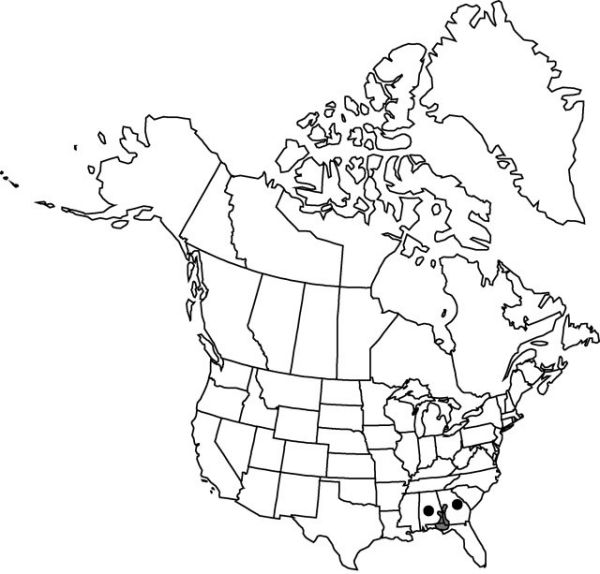Difference between revisions of "Trillium decipiens"
Brittonia 27: 17, fig. 3. 1975.
FNA>Volume Importer |
imported>Volume Importer |
||
| Line 8: | Line 8: | ||
}} | }} | ||
|common_names=Deceiving trillium | |common_names=Deceiving trillium | ||
| + | |special_status={{Treatment/ID/Special_status | ||
| + | |code=E | ||
| + | |label=Endemic | ||
| + | }} | ||
|basionyms= | |basionyms= | ||
|synonyms= | |synonyms= | ||
| Line 45: | Line 49: | ||
|publication title=Brittonia | |publication title=Brittonia | ||
|publication year=1975 | |publication year=1975 | ||
| − | |special status= | + | |special status=Endemic |
| − | |source xml=https:// | + | |source xml=https://bibilujan@bitbucket.org/aafc-mbb/fna-data-curation.git/src/bb6b7e3a7de7d3b7888a1ad48c7fd8f5c722d8d6/coarse_grained_fna_xml/V26/V26_125.xml |
|genus=Trillium | |genus=Trillium | ||
|subgenus=Trillium subg. Phyllantherum | |subgenus=Trillium subg. Phyllantherum | ||
Revision as of 22:14, 27 May 2020
Rhizomes horizontal, brownish, thick, praemorse, not brittle. Scapes 1–3, green or bronze-green, round in cross section, 1.7–4.4 dm, stout, glabrous. Bracts held horizontally, not drooping, tips at anthesis held well above ground, sessile; blade usually very strongly marked with at least 3 shades of dark green, bronze green, and purplish green, often with light central strip, mottling becoming obscure with age, ovate-lanceolate to lanceolate, widest at ca. 1/3 of length from basal attachment, tapered very gradually to tip, 8–17+ × 4.9–8.5 cm, rounded basally, margins of distal 1/3 straight, apex acute. Flower faintly ill-scented; sepals divergent-ascending, streaked with green to maroon, lanceolate to ovate-lanceolate, 36–68 × 12–21 mm, margins entire, flat or slightly raised adaxially, apex acute; petals long-lasting, erect, ± connivent, ± partially concealing stamens and ovary, maroon-purple, brownish purple to brown, greenish streaked to green, rarely yellow, becoming brown, or occasionally bright copper-bronze with age, not spirally twisted, veins not engraved, obovate to oblanceolate, large in proportion to leaf size compared to many species, 5–9 × 1–2 cm, 2+ times longer than wide, widest at or just above middle, thick-textured, margins entire, flat, apex acute, obtuse, or rounded; stamens erect or incurving, 12–24 mm; filaments yellow, 2–3 mm; anthers erect, straight, rarely arcuate, yellow, 10–15 mm, dehiscence latrorse; connectives straight, projecting 1–2 mm beyond anther sacs; ovary dark red, brown, or gray, ellipsoid, strongly 6-angled, 6–13 mm; stigmas basally erect, tips recoiled upon ovary, distinct, green, white, or purple, linear, short, 3–12 mm, slightly thickened basally, not fleshy. Fruits baccate, dark green to purple, odor not reported, ellipsoid, strongly grooved and ridged, pulpy or mealy. 2n = 10.
Phenology: Flowering winter–mid spring (late Jan–early Apr).
Habitat: Rich woods and bluffs in mixed deciduous forests of oak, red maple, beech, elm, and others, also thinner upland oak woods, in depressions and in ravines, low sandy-alluvial slopes to local rivers
Elevation: 50–100 m
Distribution

Ala., Fla., Ga.
Discussion
Selected References
None.